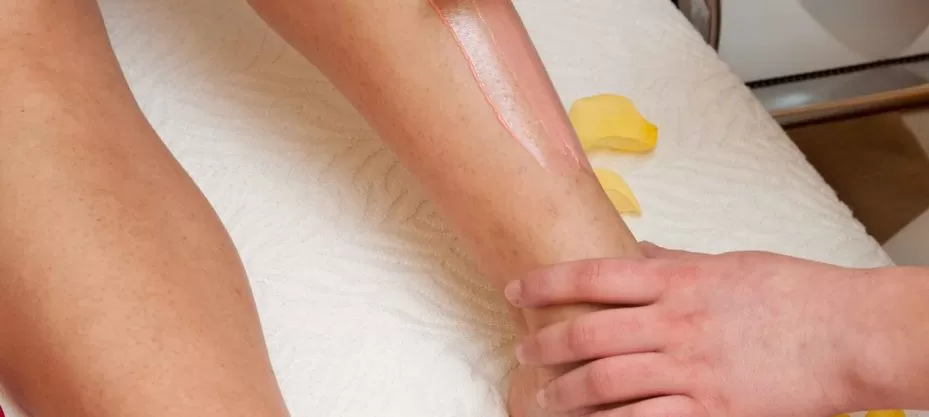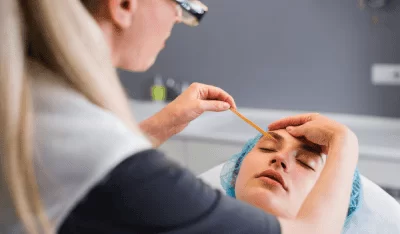Waxing can weaken hair follicles over time, potentially reducing hair growth. Regular waxing disrupts the natural hair growth cycle, leading to finer regrowth or decreased hair density. However, this process doesn’t guarantee permanent hair removal. By damaging follicles upon removal, waxing can alter growth patterns and result in thinner, sparser hair. Maintaining a consistent waxing schedule every 4-6 weeks can be beneficial to achieve longer-lasting results. Visiting a professional waxing studio in Alexandria ensures high-quality services and proper techniques, maximizing the benefits of regular waxing. Understanding how waxing affects follicles and growth cycles provides insight into maximizing its effectiveness. Consistent waxing and proper aftercare play vital roles in optimizing results.
How Does Waxing Affect Hair Follicles?
Waxing affects hair follicles by removing hair from the root, which can weaken the follicle over time. This process disrupts the natural hair growth cycle. When hair is pulled out from the root, the follicle is damaged, and with repeated waxing, the follicle can become less able to produce hair effectively. Over time, this weakening may result in finer hair regrowth or, in some cases, a reduction in the number of hairs that regrow in a particular area.
For those seeking professional waxing services, it is important to note that the effects of waxing on hair follicles can vary among individuals. Genetics, hormonal changes, and overall health can influence how well follicles respond to waxing. Besides, consistent waxing over an extended period may not completely stop hair growth but may reduce the thickness and density of hair in the treated area. Understanding these effects can help individuals manage their expectations regarding the long-term outcomes of waxing on hair growth.
Understanding Hair Growth Cycles
Hair growth cycles play a fundamental role in determining the regrowth patterns of hair after removal methods such as waxing. The hair growth cycle consists of three main phases: anagen (growth phase), catagen (transitional phase), and telogen (resting phase). During the anagen phase, the hair actively grows from the follicle. This phase can last anywhere from 2 to 7 years, with the duration varying depending on genetics and body location.
Following the anagen phase, the catagen phase occurs, signaling the end of active hair growth. This phase lasts around ten days, during which the hair follicle shrinks and detaches from the dermal papilla. Finally, the telogen phase begins, where the hair follicle rests for about three months before shedding and restarting the cycle.
Understanding these hair growth phases is essential when considering the impact of waxing on hair growth. Waxing removes hair from the root, affecting the hair follicle’s growth stage and potentially synchronizing the regrowth cycle.
Can Regular Waxing Lead to Permanent Reduction?
Regular waxing treatments have the potential to result in a reduction in hair growth over time due to their impact on the hair follicle’s growth cycle. When hair is waxed, the entire hair shaft is removed from the follicle. With regular waxing, the hair follicle can become damaged over time, leading to a weakening of the hair growth. This weakening can result in finer, sparser hair regrowth. Moreover, frequent waxing can disrupt the hair growth cycle, causing some hair follicles to remain dormant for more extended periods or even enter a prolonged resting phase. As a result, the overall density of hair in the waxed area may reduce, and the regrowth may become slower and finer.
It is important to note that while regular waxing can reduce hair growth, achieving permanent hair removal through waxing alone is unlikely. Factors such as hormonal changes, genetics, and individual hair growth patterns can influence the effectiveness of waxing in reducing hair growth permanently.
Tips for Maximizing Waxing Results
To enhance the effectiveness of hair removal treatments over time, consider implementing these practical strategies for optimizing waxing outcomes. First and foremost, make sure that your hair is the appropriate length before waxing. Hair should ideally be between 1/4 and 3/4 inches long for the best results. Scrubbing the skin 24-48 hours before waxing can help remove dead skin cells, allowing the wax to grip the hair more effectively.
Moreover, a warm shower before waxing can help open up the hair follicles, making the process less painful and more efficient.
Moreover, choosing the right wax for your skin and hair type is vital. Consult a professional esthetician to determine the most suitable wax for your needs. Following proper aftercare instructions, such as avoiding hot baths, saunas, and tight clothing for 24-48 hours post-waxing, can help prevent ingrown hairs and irritation. Lastly, maintaining a consistent waxing schedule, typically every 4-6 weeks, can lead to longer-lasting results as it helps weaken the hair follicle over time.
Other Waxing Tips:



